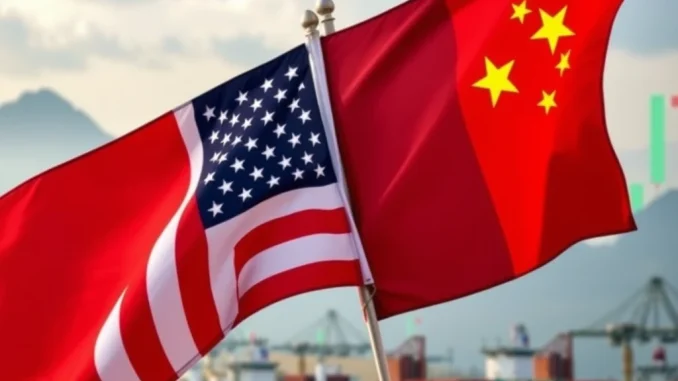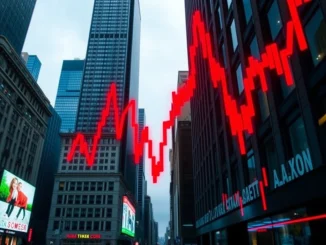
Global economic shifts and geopolitical developments often send ripples through financial markets, including the often-volatile crypto market. Understanding these macro forces is key for anyone navigating digital assets. A significant factor on the global stage is the relationship between the United States and China, particularly concerning trade. Recent comments from a key US official shed light on the potential timeline for resolving ongoing trade discussions.
How Long Could US China Trade Negotiations Last?
According to reports circulating from economic news accounts, U.S. Treasury Secretary Scott Bessent has indicated that fully concluding US China trade negotiations could be a prolonged process. The timeline suggested is potentially stretching out over two to three years. This outlook comes from a figure central to the economic dialogue between the two nations.
Why Do These Trade Negotiations Matter for the Global Economy?
The outcome and duration of trade negotiations between the world’s two largest economies have far-reaching consequences. These discussions impact everything from supply chains and manufacturing costs to inflation and currency valuations. A protracted negotiation period can introduce a level of uncertainty into the global economy, affecting business investment decisions and consumer confidence worldwide.
Key areas typically covered in such talks include:
- Tariffs and trade barriers
- Intellectual property rights
- Technology transfer
- Market access for goods and services
- Currency practices
Progress, or lack thereof, in these areas can significantly influence international trade flows and economic growth trajectories.
What is the Potential Market Impact?
A forecast of two to three years for resolution suggests continued uncertainty, which markets generally dislike. This extended timeline for US China trade talks could lead to periods of increased volatility in traditional equity, commodity, and currency markets. While not directly tied to blockchain technology or specific digital assets, shifts in the broader financial landscape can influence investor sentiment and capital flows, potentially having a knock-on effect on the crypto market.
Consider these potential effects:
- Investor Sentiment: Macroeconomic uncertainty can lead some investors to seek perceived safe havens or reduce exposure to riskier assets.
- Inflation & Monetary Policy: Trade issues can impact inflation, influencing central bank decisions on interest rates, which in turn affect liquidity and market conditions.
- Economic Growth: Prolonged trade friction can dampen global economic growth, altering the investment climate.
Monitoring the progress, or lack of it, in these crucial trade negotiations is therefore relevant for anyone assessing the wider economic backdrop influencing asset prices.
Keeping an Eye on the Global Economy
While the focus of many in the digital asset space is on technological advancements and specific project developments, the health and stability of the global economy provide the foundational context. Secretary Bessent’s comments underscore that significant geopolitical and economic factors, like the outcome of US China trade talks, remain unresolved and will continue to be influential variables over the medium term. The potential market impact of this extended negotiation period warrants attention as part of a comprehensive understanding of the forces shaping the financial world.
Summary: Navigating the Extended Trade Horizon
The prospect of US China trade negotiations potentially taking another two to three years, as suggested by Treasury Secretary Scott Bessent, highlights the ongoing complexity of international economic relations. This extended timeline introduces continued uncertainty into the global economy with potential implications for traditional markets and, indirectly, the crypto market. Staying informed about these macro-level developments is essential for understanding the broader forces that can influence investment environments and asset performance.



